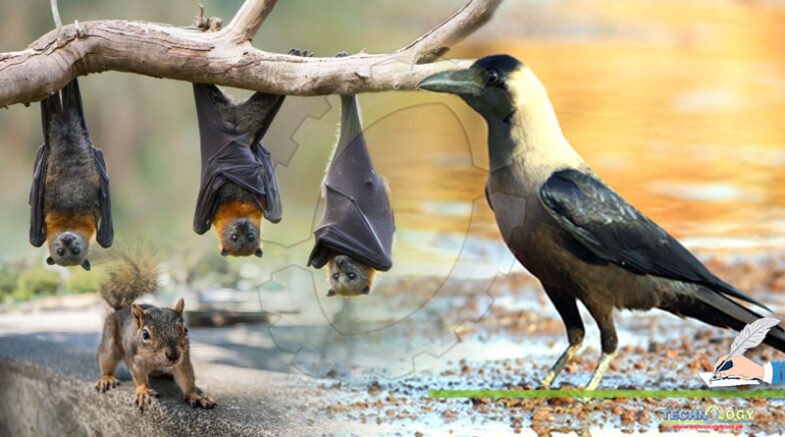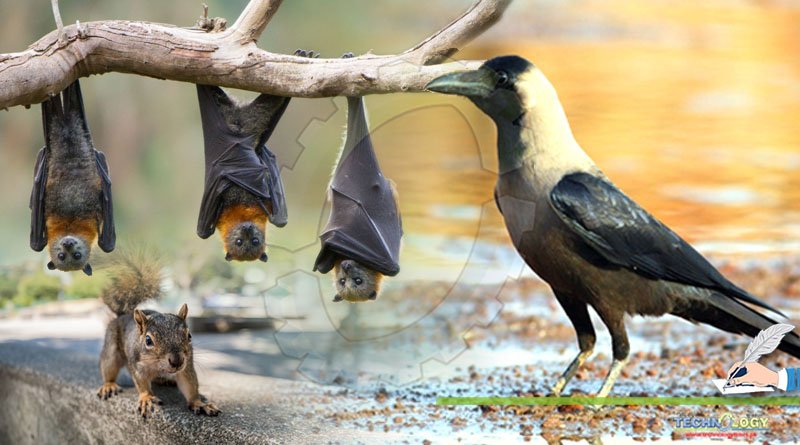Our cities, towns and municipalities are rapidly losing the previously existing urban wildlife at an alarming rate due to overcrowding of urban areas beyond their carrying capacities.

Our cities, towns and municipalities are rapidly losing the previously existing urban wildlife at an alarming rate. The migration of rural populations toward the cities for economic purposes around the planet has been overcrowding the urban areas much beyond their carrying capacities.
As a consequence, real estate business has boomed considerably in and around the cities, towns, municipalities. More and more acres of forested areas are being cleared for industry and agriculture to support the rising human populations.
Resultantly, the urban wildlife populations are vanishing rapidly from our cities. Lack of open space, parks, gardens, social forestry projects and vanishing wetlands to make way for the highly aggressive and politically influential real estate business has been the causal factor behind the rapid degradation of urban environment and ecosystem across all the developing and underdeveloped countries of Asia, Africa, Latin America, Eastern Europe, and island nations across Oceania.
Mongoose as a resilient species have survived the onslaught of urban wildlife, as they are highly adoptable and intelligent. But, all the other local wild species of different mammals (like foxes, civet cats, jungle cats, fishing cats, leopard cats, bats) losing their areas.
The passerine birds (including colorful species and song birds), aquatic birds, vultures, reptiles (tortoise, turtles, lizards, skinks and snakes), amphibians (toads and frogs), insect pollinators (like bees, moths, butterflies, wasps, hornets, ants, beetles, numerous dipterans) are no more a different story.
The snails and slugs, fishes are now also endangered due to extreme levels of pollution, habitat destruction and habitat fragmentation, indiscriminate poaching and illegal trafficking, poisoning as well as destabilization of local ecosystems as a result of various related natural and predominantly anthropogenic factors.
Species that has thrived in cities are domestic pets and farm animals (dogs, cats, ferrets, rabbits, guinea pigs, hamsters, cage birds, aquarium fishes, livestock, farm animals, poultry species etc.), squirrels, pigeons and doves various starlings, parakeets, crows, black kites, sparrows (a resurrected species), koels, kingfishers, woodpeckers, rats and mice, feral dogs, cats, pigs, cattle to mention a few. These animals are having negative impacts on the local ecosystems of our cities, towns and municipalities.
One of the resilient species that I would like to highlight is the common crow, an extremely intelligent and successful urban wildlife species which is a bird that unfortunately escape our serious attention; as we see them so closely tied to the human settlements around us.
Crows are intelligent, opportunistic species that has invaded our urban space with great success. With continuous food supply round the year, they have been foraging, nesting and breeding successfully within the urban wildlife ecosystem for successive generations.
An outstandingly resourceful, industrious and meticulous avian species; cries has established themselves as a dominant species in the urban environment around the globe. They have strong bondage between partners and usually partner for life; and are reported to be trusted partners and extremely devoted parents, raising their chicks with great care.
They are territorial and defend their niche from other members of the same and related or unrelated species. Crows can be extremely aggressive to defend predators like cats, dogs, civets, mongoose, snakes, rats, kites, owls, owlets and eagles and even humans which they consider as immediate threats to their nests, eggs and growing chicks.
They are known to be revengeful and identify individuals based on facial features. There are reports on single crow or crows in group attacking and harassing their predators or attackers or abusers. They have been studied in the western world for their intelligence, superior learning abilities and in repeating complex tasks once taught and assigned to them. We need to explore this species to know them even better.
Freshwater dolphins are an epic species from the Indian subcontinent. The Indus dolphins from Pakistan, Gangetic or Ganges river dolphin, and Irrawaddy dolphins from India, Bangladesh and Myanmar are all showing alarming signs of decline.
The worst performers are Indus and Gangetic dolphins; due to indiscriminate overfishing, rampant poaching, collision with motorized aquatic vehicles, water pollution, unfortunate entanglement in the fishing nets to mention a handful of factors responsible for depletion of the species.
Yet both confirmed and unconfirmed reports from Pakistan and Bangladesh suggest the survival of these two resilient species who defied all odds to survive in their over exploited and highly polluted freshwater aquatic environment.
I myself have seen Gangetic dolphins on several occasions while traveling on the Hooghly River in West Bengal very close to the shoreline; but was unable to photo document them due to their transient appearance on the surface of the water following complete disappearance.
Stunning performances are a regular show event by trained dolphins in several amusement parks in the USA, Canada and Australia. Dolphins are a group of highly intelligent marine mammals, that has shown their keen interest in interacting with humans, as well as their outstanding learning and application skills.
Such marine parks make significant profit annually from the sale of tickets to millions of visitors and tourists who visit these facilities. A portion of the profit is donated for conservation purposes and is used in reuse, treatments, rehabilitation and reintroduction of species into their original wild habitats.
Such initiatives with strong conservation focus needs to be introduced in India too. They not only are a source of revenue generation and employments for the local administration; but, also an important medium of building education and awareness among the public.
Angling or, in other words, recreational fishery or sports fishery is a highly established multimillion-dollar industry in western countries. Although indigenous recreational fishing is not unheard in India; but, it lacks the focus of an organized industry.
Millions of rich western tourists visit India annually and many of them are sports and wildlife enthusiasts or are passionate about angling, adventure tourism and ecotourism. A section of such rich tourists can be provided with recreational fishing facilities in restricted fishing tanks or reservoirs designed in natural environments.
Although recreational fishing is commonly practiced into wilderness sites in western countries; but, such a model is not acceptable for India due to possibility of destruction of natural habitats as well as introduction of accidental predatory species and poaching.
But within restricted wilderness tanks one could look into setting highly organized angling facilities within resorts or extended averages associated with high class hotels, restaurant plazas well as recreation centers.
Such artificial or natural ponds could be loaded with big carp fishes and other ornamental recreational as well as edible fish species that are attractive to the anglers and tourists. This could not only boom tourist flow; but also provide economic sustainability for the local tourism and hotel industry, provide employment to main and accessory industries for economic employment.
Such economic development and opportunities could also be used as events of public education and awareness regarding our fragile environment and ecosystem and the importance of wildlife especially urban wildlife conservation, need for protecting our endangered species of flora and fauna and different conservation strategies and approaches.
During the off season, such ponds could be used under local fishermen cooperative for commercial fishery to boost additional income generation. Fishing and tourist guides, wildlife and birding tour operators could be encouraged towards building responsible ecotourism circuits and opportunities to allow ecology and economy to walk hand in hand.
There is need for establishing urban wildlife rescue and rehabilitation centers in our cities and towns to help in the reintroduction process of several of our lost urban wildlife species. They could also serve as an environmental and educational cum awareness center for our urban populations; particularly the young children who are our future citizens.
All major global religions practice teaches us to be peaceful, forgiving, benevolent, happy and compassionate not just to fellow human beings; but also towards nature, environment, wildlife and even towards non-life matters.
Currently, we are sitting at the crossroads of environmental pollution, ecological degradation, Climate Change, Global Warming, catastrophic tsunamis, cyclones, tornadoes, earthquakes, volcanic eruptions, flood, fraught, famine, over exploitation of our limited natural resources.
This includes but not limited to encroachment and destruction of natural forests, poaching and trafficking of endangered wildlife as well as major and minor forest resources to mention only a few of the multitude of problems impacting our lives abs livelihoods.
At this juncture, it is important for us to learn to live synergistically with our other co inhabitants of this planet such as wildlife, forests and our nature. Unless we learn to practice simple sustainable lifestyle and in using our resources judiciously, we are doomed and answerable to our future generations for the damage add destruction we have inflicted on this planet.
Let us join our hands and walk towards the sustainable lifestyle and practices to prevent bringing further cataclysmic changes and destruction to our lives and livelihoods.
